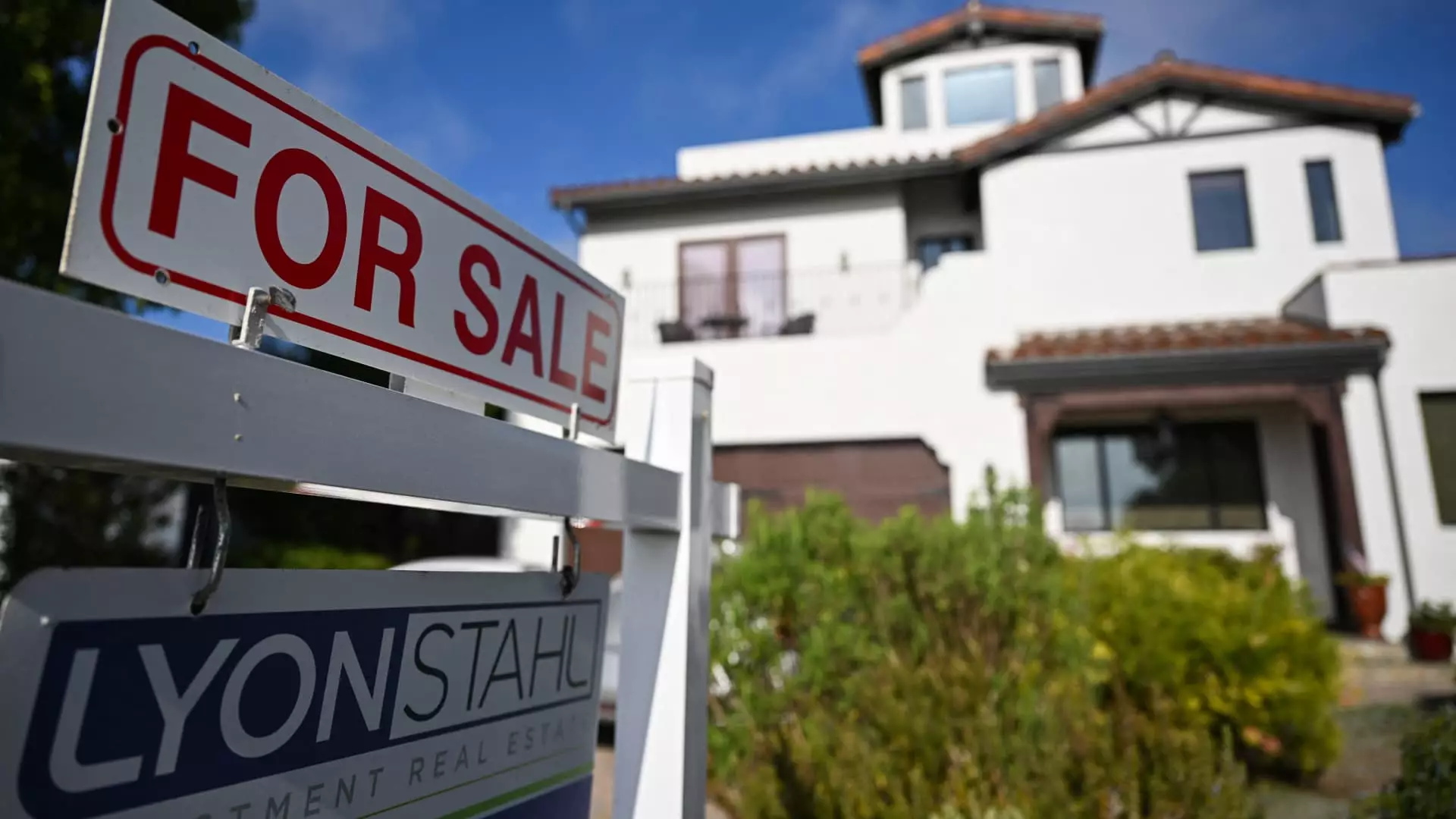On Thursday, the financial landscape experienced an unexpected shift, sending shockwaves through the mortgage sector. Following an announcement from the Trump administration regarding new tariffs, mortgage rates took a significant dive, falling 12 basis points to a remarkable 6.63%, marking the lowest level since October. It’s a puzzling scenario that our economy is often fraught with; decisions made in the political arena spill over into the housing market, holding immense implications for millions. As Matthew Graham from Mortgage News Daily highlights, the announcement not only underscores the volatile nature of tariff politics but also hints at an approaching storm in global trade dynamics.
The immediate reaction saw investors abandoning the stock market, leading to a rush towards the perceived safety of bonds. This behavior has become increasingly common as economic uncertainty looms over our heads like a dark cloud. Yet, while some hail this as a victory for buyers, we must remain cautious. This reduction in rates may seem like a boon but is fundamentally tied to larger underlying economic issues that have not yet resolved themselves.
The Illegitimate Boon of Lower Mortgage Rates
This decline in mortgage rates comes at an ostensibly fortuitous time; spring is traditionally a busy period for home-buying. However, we must grapple with the disconcerting reality that even with these lower rates, many prospective buyers are still unable to afford homes. Statistics reveal that a staggering 70% of American households, amounting to 94 million people, cannot afford to purchase a home priced at around $400,000 – a mediocrity that should concern us all.
Offering more proof of this unsettling reality, the latest data from Redfin indicates that the standard monthly payments for homebuyers hit a historic high of $2,802 for the second consecutive week, alongside sale prices rising by 3.4% annually. The mere fact that a 6.5% mortgage rate necessitates an income of approximately $61,487 to secure a $200,000 home reveals systemic issues in our economic structure. It’s a striking reminder that numbers have ramifications far beyond just figures; they represent lives caught in a tangled web of economic stratification.
Supply and Demand: A Dismal Disparity
While the chatter of an increased supply of homes for sale continues, it’s vital to recognize that this supply does not cater to those on the lower end of the income spectrum. It’s one thing to increase listings; it’s another to feature homes that are accessible to those who need them most. The chronic underbuilding since the Great Recession continues to cast a long shadow over our housing market. Simply put, the incoming inventory is ill-suited to the demands of the average American worker striving to achieve homeownership.
Matt Ferris, an agent at Redfin, highlights that many sellers believe we might be at the apex of the housing market, prompting them to cash out while the opportunity is ripe. However, this trend raises another question: are sellers placing their individual ambitions over the broader implications of market stability? The phenomenon of people selling to avoid losing government jobs or to accommodate office policies indicates an evolving workplace culture, yet this does little to alleviate the burdens placed on buyers attempting to climb the property ladder.
The Hard Truth Behind Market Trends
While it is encouraging to see a 10% annual increase in new home listings during March, the overall market is far from robust. Active listings are up 28% year over year, but the fact that homes are taking longer to sell and a rising number are facing price reductions is telling. Control over home prices seems to be slipping away as many prospective buyers stand firmly on the sidelines, deciding to wait rather than risk financial strain in a precarious economic environment.
According to Realtor.com, pending sales—contracts on existing homes—dipped 5.2% from March of the previous year in large metropolitan areas. This is a troubling trend, especially in cities like Jacksonville and Miami, where economic conditions are rapidly changing. Virginia Beach echoing similar sentiments warns us against optimism that does not ground itself in reality. As Danielle Hale of Realtor.com aptly puts it, the high cost coupled with growing economic anxieties results in a stagnant market.
Each statistic, each trend, signifies more than just figures in a report; they expose the disparity between wages and home prices, unveiling a crisis that calls for urgent intervention. The relationship between mortgage rates and housing affordability is intricate and plagued by external turmoil. As we look toward future economic policies, it is crucial to demand transparency and accountability from those wielding power over such a consequential industry. The overarching sentiment remains: we must strive for a system that genuinely serves the American people, not merely accommodates the whims of financial markets.

